 Did you know REAL food can be one of the best cholesterol-lowering medicines?
Did you know REAL food can be one of the best cholesterol-lowering medicines?
Whether you have been told by your doctor “it’s time to get your cholesterol down” or you just want to make sure your cholesterol stays within a healthy range, we are here to show you how truly powerful REAL food can be!
What is cholesterol and why do we need to be concerned about it?
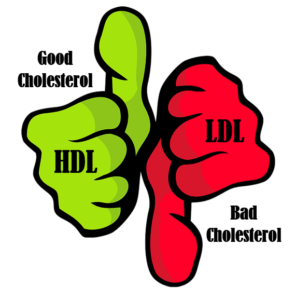 We all need cholesterol to build healthy cells and for effective organ function, but having too much can increase your risk of coronary artery disease, heart attacks and other heart-related diseases. Too much cholesterol, especially bad cholesterol, can develop fatty deposits in blood vessels – also known as “plaque” – and restricts blood flow, which can not only cause heart attacks, but also strokes, dementia, and gallstones.
We all need cholesterol to build healthy cells and for effective organ function, but having too much can increase your risk of coronary artery disease, heart attacks and other heart-related diseases. Too much cholesterol, especially bad cholesterol, can develop fatty deposits in blood vessels – also known as “plaque” – and restricts blood flow, which can not only cause heart attacks, but also strokes, dementia, and gallstones.
There are two main types of cholesterol.
- LDL is the “bad” or “lousy” cholesterol. A high LDL level leads to a buildup of cholesterol in your arteries.
- HDL is the “good” or “happy” cholesterol. It carries cholesterol from other parts of your body back to your liver. Then, your liver removes the cholesterol from your body.
What is a healthy cholesterol level?
Most doctors agree it’s best to keep your total cholesterol below 200, if not below 180, and more importantly, that your LDL is well below 130 and HDL is 60 or more for women and 50 or more for men.
What are some good habits to master your cholesterol?
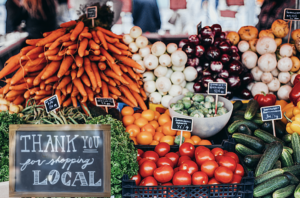 Did you know that for every 10% drop in your cholesterol level, your heart attack risk drops by 20% to 30%?
Did you know that for every 10% drop in your cholesterol level, your heart attack risk drops by 20% to 30%?
Plus, there’s more good news! Studies show most of us can reduce cholesterol quickly, and without the need for medications — simple lifestyle strategies can be very powerful!
To maintain a healthy cholesterol, it’s as much about what foods you add, as what you take away. You want to add foods that lower LDL, cut back on foods that raise LDL, all while also doing ALL you can to keep HDL (the happy GOOD cholesterol) as high as possible.
Different foods lower cholesterol in various ways. Some are full of soluble fiber, which act like a sponge to soak up cholesterol in the digestive system and drag it out of the body before it gets into circulation. Then, some foods give you polyunsaturated fats, (including omega 3 fatty acids) which directly lowers LDL and reduces the risk of clogged arteries and heart disease.
Add these foods!
-
 Oats. An easy first step to improving your cholesterol is including oats in your breakfast routine. Overnight oatmeal is the perfect time-saving breakfast and one serving gives you 1 to 2 grams of soluble fiber. Add a banana or some strawberries with our Neapolitan Overnight Oatmeal and you have added another half-gram! Search for “oats” to find a variety of recipes!
Oats. An easy first step to improving your cholesterol is including oats in your breakfast routine. Overnight oatmeal is the perfect time-saving breakfast and one serving gives you 1 to 2 grams of soluble fiber. Add a banana or some strawberries with our Neapolitan Overnight Oatmeal and you have added another half-gram! Search for “oats” to find a variety of recipes!
- Barley and other whole grains. Like oats and oat bran, barley, corn and other whole grains can help lower the risk of heart disease, due to the soluble fiber they deliver. This is great because breakfast is not the only meal where you want to sop up bad cholesterol! (Check out these great recipes for barley, freekeh and quinoa!)
-
 Beans. Especially rich in soluble fiber, beans are excellent cholesterol sponges! They also help you get full and stay full longer, helping with weight control. While all varieties of beans are beneficial, black-eyed peas, lima beans and black beans top the list! Every other type of bean follows closely behind, which is why you will find over 100 bean-inclusive recipes on Eat REAL America, and why we include them at least 3 times a week in our 28-day kickstart menu plan in our Eat REAL Cookbook!
Beans. Especially rich in soluble fiber, beans are excellent cholesterol sponges! They also help you get full and stay full longer, helping with weight control. While all varieties of beans are beneficial, black-eyed peas, lima beans and black beans top the list! Every other type of bean follows closely behind, which is why you will find over 100 bean-inclusive recipes on Eat REAL America, and why we include them at least 3 times a week in our 28-day kickstart menu plan in our Eat REAL Cookbook!
- ALL Vegetables. Include veggies in a variety of vibrant colors, quantities, and consistencies, achieving 5-9 servings per day. You may think this seems impossible, but if you back down on your meat and refined grain portions, you can swap in huge, delicious salads and you will have room on your plate to make this happen easily! There are three veggies that score especially high on the honorable mention list: sweet potatoes, eggplant and okra. These are VERY good sources of soluble fiber. (And, we of course, have you covered with many delicious ideas!)
- Pectin-Rich Fruits. Fruits such as apples, grapes, strawberries, and citrus fruits are incredibly rich in pectin, a type of soluble fiber that lowers LDL. And, an added bonus…if you include these daily, it will help guarantee fewer sweet cravings, since your brain will have received the natural sugars it needs!
-
 Nuts. Studies show that eating almonds, walnuts, peanuts and other nuts are good for the heart. Eating 2 ounces (about 1/2 cup) of nuts a day can help lower LDL. Nuts also have additional nutrients like chromium and magnesium that protect the heart in other ways.
Nuts. Studies show that eating almonds, walnuts, peanuts and other nuts are good for the heart. Eating 2 ounces (about 1/2 cup) of nuts a day can help lower LDL. Nuts also have additional nutrients like chromium and magnesium that protect the heart in other ways.
- Fatty fish. Eating fish two or three times a week can lower LDL, especially when it replaces meat. Fatty fish, such as salmon, tuna, and trout, also deliver LDL-lowering omega-3 fats. Omega 3 fatty acids help reduce triglycerides in the bloodstream and also protect the heart by helping prevent the onset of abnormal heart rhythms. (Try one of our favorites…Salmon with White Beans and Honey Mustard Sauce!)
Cut back on these foods!
Harmful LDL creeps upward and protective HDL drifts downward largely because of the foods we eat and other lifestyle choices. Here are foods to eat LESS of:
 Sugar-loaded foods. Excess sugar is known to contribute to obesity, diabetes, and other conditions linked to heart disease, and now research links sugar to unhealthy cholesterol and triglyceride levels. Remember, we’re not talking about natural sugars that come packaged with fiber and beneficial nutrients such as in REAL fruits. But ADDED refined sugar found in candy, cookies, cakes, pies, flavored yogurt, soda, and highly processed snacks. Men can safely consume 9 tsp (36 grams) of added sugar a day, and women 6 tsp (24 grams) of sugar a day. For comparison, one 12 ounce soda contains 10 teaspoons (40 grams). You can indulge in our “not too sweet” snack, dessert and beverage options while still fitting within this guideline!
Sugar-loaded foods. Excess sugar is known to contribute to obesity, diabetes, and other conditions linked to heart disease, and now research links sugar to unhealthy cholesterol and triglyceride levels. Remember, we’re not talking about natural sugars that come packaged with fiber and beneficial nutrients such as in REAL fruits. But ADDED refined sugar found in candy, cookies, cakes, pies, flavored yogurt, soda, and highly processed snacks. Men can safely consume 9 tsp (36 grams) of added sugar a day, and women 6 tsp (24 grams) of sugar a day. For comparison, one 12 ounce soda contains 10 teaspoons (40 grams). You can indulge in our “not too sweet” snack, dessert and beverage options while still fitting within this guideline!
- Saturated fats and “fried” foods. The exact role of saturated fat in heart disease is currently under debate. Saturated fat can increase your levels of “bad” LDL cholesterol. But it also has some benefits, too — it lowers triglycerides and nudges up levels of “good” HDL cholesterol. For now, most agree it’s best to limit your intake of saturated fat-rich foods. Typical sources include animal products, such as beef and pork, whole-fat dairy products, eggs, and oils, such as butter, vegetable oil, palm oil, and coconut oil. Keep in mind, moderation is key! And, we know you may hate hearing this, but it’s best to completely eliminate fried foods.
- Trans fats. How much trans fat should we eat? ZERO! The FDA has banned trans fats from the U.S. food supply, but some still exist, thanks to a loophole in the manufacturing label system stating less than .4 grams per servings can be considered zero on nutritional labels. The best way to know if trans fats are sneaking in? Read those ingredient labels and avoid foods that have “partially-hydrogenated” oils in their ingredient list.
- Protein portions. Many of us put over-sized animal protein on our plates (beef, pork, chicken, fish, cheese and eggs), which leaves less room for the soluble fiber-rich foods we need. A good rule of thumb is to keep protein choices lean, while keeping the quantity in check (5 ounces a day for women, and 7 ounces a day for men – for reference, 4 oz of meat is about the size of a deck of cards). Try this habit…enjoying vegetarian meals at least twice a week can give even better cholesterol lowering results! It’s easier than you might think – we have many vegetable-forward meals to choose from!
- Limit alcohol. Maybe you hate hearing this even more, but alcohol adds extra calories, which can lead to weight gain and being overweight can raise your LDL and lower your HDL. It’s important to note that too much alcohol can also increase your risk of heart disease because it can raise your blood pressure and triglyceride levels. So, enjoy that one glass of wine, beer, or a small amount of hard liquor, keeping in mind the recommendation is men should have no more than two alcoholic drinks a day and women should have no more than one alcoholic drink a day.
And, of course…get moving!
Not only can these eating habits improve cholesterol, but we would regret not mentioning that maintaining a healthy weight and including moderate physical activity can also help raise HDL, the “good” cholesterol!
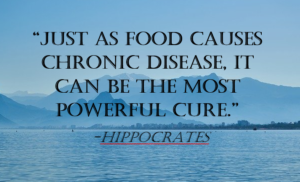 Amazingly, these healthy habits help you in ways far beyond just lowering cholesterol!
Amazingly, these healthy habits help you in ways far beyond just lowering cholesterol!
Our goal is to keep you off expensive medications with their nasty side-effects. And, we want to help you stay inspired and motivated on the path to good heath, by celebrating and enjoying delicious REAL food!
Do you have any successful cholesterol lowering experiences?
Please share your stories with us!
(Print a PDF of this coaching tip: Cholesterol Coaching Tip Eat REAL America PDF)
 LEARN MORE ABOUT THE NAPKIN!
LEARN MORE ABOUT THE NAPKIN!
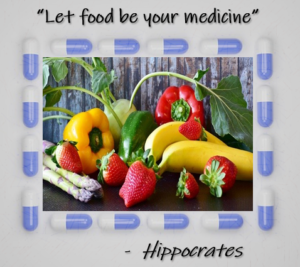

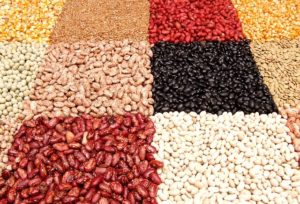
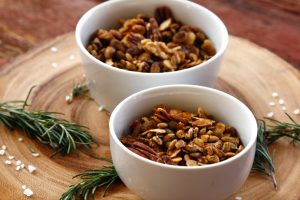
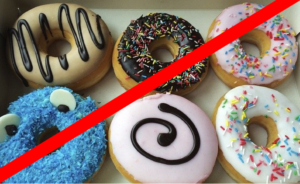
God knows that is my goal!! I am loving the real food, definitely increasing my beans and cruciferous vegetables…….I will be having my yearly blood draw in April and I will let you know……my HDL/LDL are high, family history, but I am trying to stay off meds as long as I can. Great tips can’t wait to share in my next class that starts in HEART MONTH!
Wondering id there are any success stories with these suggestions? I have good numbers except for HDL – I am increasing exercise, cutting down on sugar and adding a bit more healthy fat… anyone else?
It’s interesting to see just how much something like oats can aid in reducing cholesterol. Thank you so much for sharing this insight!
Thank you for all these wonderful recipes and all the wonderful information. It has made lowering my cholesterol journey much easier.
I completely agree with Rita Clark, the recipes are so tempting and I will enjoy cooking them, I don’t have a sweet tooth so naturally I don’t eat much if any sugar products, and I love most vegetables and salmon, I just have to keep the serving size smaller.
So thank you Krista for answering my email and providing me with such great information
Sandy